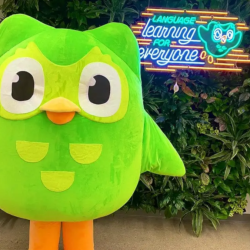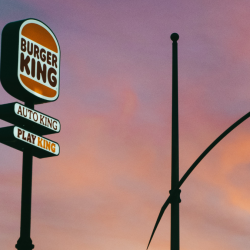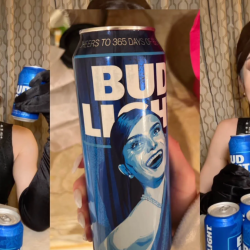Social media is a key requirement for brands looking to attract customers in 2021. But being heard above the background noise on big tech platforms is difficult. More than 500 million tweets are posted to Twitter every day, meaning that it’s becoming increasingly hard to make your message go viral among significant competition. Marketers have a tough ask: stick to the brand guidelines but stand out from the crowd. And don’t offend anyone in the process.
It’s a difficult thing to do: you need to be quick enough off the mark to catch the wave of reaction on social media, while being canny enough to not misstep in the messaging, with a well-intentioned tweet going down like the proverbial lead balloon.
One brand that was somewhat surprisingly caught out in the social media trap was Burger King with its viral marketing stunt for International Women’s Day. It’s a brand known for its responsiveness and the way it handles the zeitgeist with just the right mix of irreverence but brand-appropriate messaging, which made its misstep all the more shocking.
No half measures
The company had taken out a print advertisement in the United States promoting its Burger King Foundation, supporting female chefs get into the business and thrive. The full-page ad, on a stark red background, began with a bold, declaratory statement. “Women belong in the kitchen,” it read, before going on to make its case over three paragraphs of text.
The copy treatment was borrowed by the UK social media marketing team, who tried the same trick on Twitter. “Women belong in the kitchen,” the company tweeted, threading similar sentiments underneath the main missive in a series of posts.
The tweet didn’t last long. Within a day, it was deleted, and replaced with an apology for getting the tone wrong. “The Twitter environment is completely different from the environment of a print ad, and people didn’t see that very important second bit of copy that changed the tone, which led to this becoming controversial in the world of Twitter,” says Alex Wilson, a social media strategist with years of experience.
“I find it interesting to think about how something that was obviously a good and effective bit of creative when done for a newspaper ad in New York suddenly became a controversial piece of content when it was used by someone in the UK on Twitter.”
The incident will forever go down as a low point for the brand, which has traditionally been praised for its ability to garner attention while also remaining relevant and constructive in a world increasingly focused on shocking the algorithms into attention. That Burger King of all brands mis-stepped shows the challenge for everyone operating under the intense scrutiny social media affords big businesses.
Be careful what you wish for
Earnest explanations don’t work in the attention economy, meaning eye-catching, outlandish claims get sent out through social media accounts. Those managing the profiles on behalf of some of the world’s most challenging companies have to walk a high wire act, making sure not to fall off.
“I really don’t think the Burger King tweet was a ‘voice’ problem per se,” says Toby Howell, who runs the hugely popular Morning Brew Twitter account. “Burger King just wanted the maximum amount of eyeballs on their message and clearly didn’t care how they got them. But they ended up sacrificing their message at the altar of engagement, destroying a lot of brand goodwill in the process.”
It’s a risk more and more companies find themselves taking as the competition online increases to cut through the chatter and make sure a message is heard. However sometimes the underlying message gets lost in the attempt to get seen. Jeanne Sager used to run Dictionary.com’s Twitter account and recently moved to Teachstarter.com to oversee their social media accounts.
Sager was no shrinking violet when running the dictionary’s Twitter profile. She would use it to offer wry commentary on societal trends, including mocking celebrities and politicians, or fact-checking and publicly shaming racists – to general acclaim.
But in doing so, Sager always kept a North Star in her mind when conjuring up tweets: “The line you always have to draw in the sand is: ‘Am I saying something useful – albeit attention-grabbing – or am I saying something that is solely attention-grabbing?’” she explains. “If it’s the former, then you may still have a few things to consider before sharing it, but if it’s the latter, it shouldn’t be shared.”
The angel on your shoulder
It’s similar to a decade-old motto drawn up by long-time internet marketing stalwart Matt Muir, also known as Muir’s Two Laws of the Internet. Law one is have good content. Law two is don’t be a dick (but a bit more coarse). “It’s about adding value to an audience,” Wilson puts it. “The easiest way to do that is to be funny. If you’re just out there pumping a core message out without trying to add value, it’s very easy to get ignored.”
The challenge is doing that in isolation. Social media marketing teams are often overworked, underpaid and shorn of much contact with the rest of their company. Conjuring up ideas for engaging content that manage to keep on the right side of acceptability, while working within a brand’s often-strict guidelines, isn’t an easy task.
Part of the reason that few within the industry are willing to criticise the people behind the errant Burger King tweet is they’re hyperconscious that for a last-minute rethink, they could just as easily have been behind the catastrophic misstep.
“There have been thousands of things I’ve thought about posting but didn’t over the years,” says Sager. “I wouldn’t want to share them now for the same reason I didn’t share them then: I just didn’t feel the risk was worth it.”
Those never-to-be-seen tweets run the gamut from outright offensive to simply having the potential to be misread and confused for something that could cause offence. To avoid that, Sager listens to her gut. “One thing I’ve always kept in mind as a social manager is that what I put out on a brand’s social doesn’t just affect me, and it doesn’t just affect the brand as a whole. It also affects the jobs of everyone else at the brand – real human beings.”
And if she’s still struggled to decide whether something is risky or not, she’s sought out support and a sounding board from colleagues. “I think it’s crucial to have people you can trust to brainstorm with,” she says.
Those colleagues needn’t be professional marketers themselves, those are often too tempted to follow in the ‘voice’ footsteps like those of the team behind Wendy’s Twitter account (notoriously ‘on brand’ Tweets).
“When it comes to a meme, for example, if you work in social, you’ve seen it everywhere. You get it,” explains Sager. “You ‘speak meme’. But someone who isn’t in social is that outsider who may just happen upon it and make a snap judgment about your brand without that broader context. You want to make sure that person is going to react as positively as people who live and breathe social media.”
Above all, be you
It’s also crucial to be authentic to the brand. Burger King is one of the rare companies that has managed to navigate the controversy relatively intact because they’ve long been known for their cheeky marketing campaigns. For every mis-stepping “Women belong in the kitchen” tweet, there’s the warmly-welcomed stunt ads, such as hiding Big Macs behind every Whopper advert the company had run for a year.
“Context and consistency is everything on social media,” says Paris Collingbourne, director of Loud Llama, a PR and social media agency based in South Wales, which has worked with small businesses and global brands. “If you’re going to be ‘quirky dumb’, the tone needs to be represented across all channels.”
Collingbourne highlights Innocent smoothies as nailing the right tone across all their campaigns, online and offline. Others are less nuanced. “The challenge of crafting a distinct voice for a brand arises most of the time from trying to fit a round peg into a square hole,” say Howell. “Most of the time, brands go the flippant route for no other reason than they see Wendy’s doing it. Your voice should always jibe with what your brand’s DNA is.”
That’s part of the reason that Burger King has managed to bounce back in the time since it first tweeted in error: the company’s outgoing (in more ways than one as he left the brand in April 2021 for Activision) chief marketing officer, Fernando Machado, said the company had lessons to learn, but that he believed most people knew what they were aiming to say.
“There was no great witch hunt, no offering anybody up as a sacrifice,” says Wilson. “There was no firing the community manager. It was just this attitude of, ‘We clearly made a mistake here.’ It’s an environment where I suspect they’re quite forgiving of people who fail, and I suspect that’s quite a good thing if you’re a brand wanting to be quite daring with social media. “
And on Twitter, being daring is a high stakes game. “Twitter is a magnet for controversy,” explains Wilson. “Other platforms aren’t in quite so much the same way.” For brands looking to make their mark, it’s worth remembering that sometimes, making no mark at all is preferable. Walking that fine line between eye-catching and offensive is difficult, particularly when working at the frenetic pace social media marketing demands. “Oftentimes if I’m worried about how something could be perceived, my gut has told me to simply skip it,” says Sager. “Because it may be fine, but the risk is too great if I get it wrong.”
Featured image: Gwoeii / Shutterstock.com































